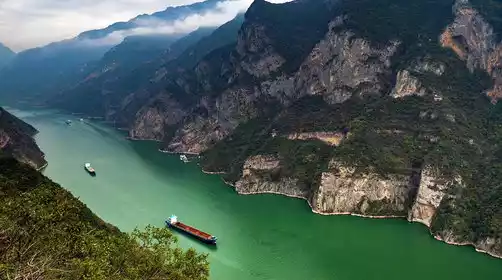Day 1: All over the country → → → → → Chongqing ★ Gathering Day
All day
Today is a half-day gathering day. Tourists from all over the country will gather in Chongqing. Upon arrival at your designated hotel, please provide "China - Travel Note + Name" to check in.
After checking in this morning, follow your tour leader to the Great Hall of the Three Gorges Museum. This is your first stop: learn about the history of the Three Gorges! (The museum is closed on Mondays. If this is the case, you can take a city walk instead.)
For dinner, we recommend the authentic air-raid shelter skewers
. In the evening, follow the tour guide to [Jiefangbei and Hongyadong] to experience the prosperity and bustle of Chongqing's landmarks.
Chongqing city food, drink and entertainment itinerary guide. After registration, you can consult the China-TravelNote product manager (add WeChat why199357) or the activity leader.


Day 2 Chongqing → 816 Underground Nuclear Power Plant → Baiheliang Underwater Museum → Wanzhou
·morning
After breakfast at the hotel, we depart around 9:00 AM. We'll travel by bus to the Fuling 816 Underground Nuclear Project, where we'll uncover the mystery of why 60,000 people disappeared for over a decade, explore the world's first man-made cave system, and discover the Third Front construction project, which remained hidden for over 50 years.
816 After the tour.
·afternoon
After lunch, we'll head to the Baiheliang Underwater Museum, known as the "world's first ancient hydrological station," "a treasure trove of hydrological data," and "an underwater forest of steles." It's a nationally recognized cultural relic among the Three Gorges' cultural landscapes, a classic witness to the historical transformations of the Three Gorges. (If Baiheliang is closed on Mondays, the itinerary will be replaced with a visit to the Fuling Great Rift Valley.)
After the tour, we will go to Wanzhou. If you still have energy, you can make an appointment with your friends to taste Wanzhou cuisine.
Remember to rest early tonight, and our itinerary will continue to be exciting tomorrow!


Day 3 Wanzhou → Baidi City → Top of the Three Gorges → Wushan
All day
After breakfast, we'll drive to Fengjie, Chongqing. Here, you'll find Baidi City, described by the poet Li Bai as "leaving Baidi in the morning amidst the colorful clouds, returning to Jiangling a thousand miles away in a single day." Standing atop Baidi Mountain at the mouth of Qutang Gorge, it was a crucial pass on the ancient eastern route into Shu, a battleground for military strategists since the Qin and Han dynasties. Remember when Liu Bei entrusted his son to the care of others during the Three Kingdoms period? It was here.
Remember to bring a fifth-edition 10-yuan banknote, featuring the Kuimen Gate in the background, to witness the changes from the past to the present. If you're lucky, you might even hear the calls of monkeys. Gazing at the boats on the river, you'll evoke the sentiment of Li Bai's poem, "The monkeys on both banks cry incessantly, while the light boat has already passed through the mountains."
P.S. We'll hike the Three Gorges' highlight section (the strenuous route). The tour leader will arrange this in advance. If you're unwell, you can opt for a scenic tour instead (without compromising your experience).
Take a ferry and ascend along the picturesque plank path and perilous rock path to the summit of the Three Gorges, where you'll overlook the mountains and the stunning scenery of Qutang Gorge.
Get off the Three Gorges Cableway or scenic shuttle bus at the appropriate time and take a bus to Wushan Hotel (depending on the itinerary time, you may stay at Fengjie Hotel that night).

Day 4 Wushan → → Little Three Gorges → → Little Three Gorges → → Zhongxian
·morning
Don't sleep in this morning! Grab a snack and head to the pier to board the Little Three Gorges Cruise, taking in the breathtaking scenery of the Little Three Gorges and the Little Three Gorges, two of the world's most breathtaking gorges. Stunning peaks, lush bamboo, and the chirping of monkeys fill the air, creating a truly picturesque and rustic experience. (In bad weather, we won't enter the Little Three Gorges.)
·afternoon
At around 2 pm, we ended the trip and returned to the dock. After a short rest, we went to Zhongxian Hotel to rest.


Day 5 Zhong County → Shibaozhai → Chongqing City or Airport Railway Station
·morning
We set off at the right time and headed to Shibaozhai, one of the "Eight Strange Buildings in the World". According to legend, it was a colorful stone left by Nuwa when she repaired the sky, hence the name "Shibao". This stone is shaped like a jade seal, so it is also called "Yuyin Mountain".
Baozhai, nestled against the mountainside, boasts a unique shape, with its soaring eaves and swaying wings. The entire structure, consisting of the gate, the main structure, and the attic (a stone pagoda on the top of the village), stands 56 meters tall and 12 stories tall, all made of wood. Construction began during the Wanli reign of the Ming Dynasty and was further enhanced during the Kangxi and Qianlong reigns.
·afternoon
After finishing the Shibaozhai trip, return to Chongqing and transfer to the airport or train station.









